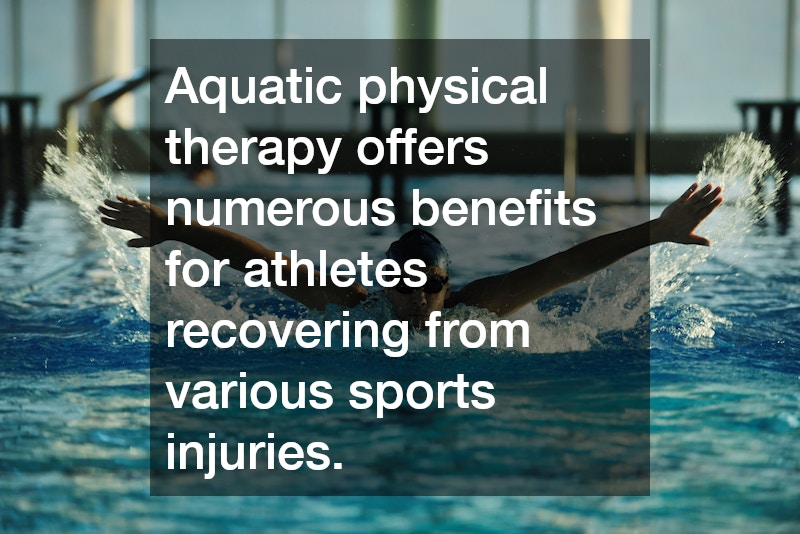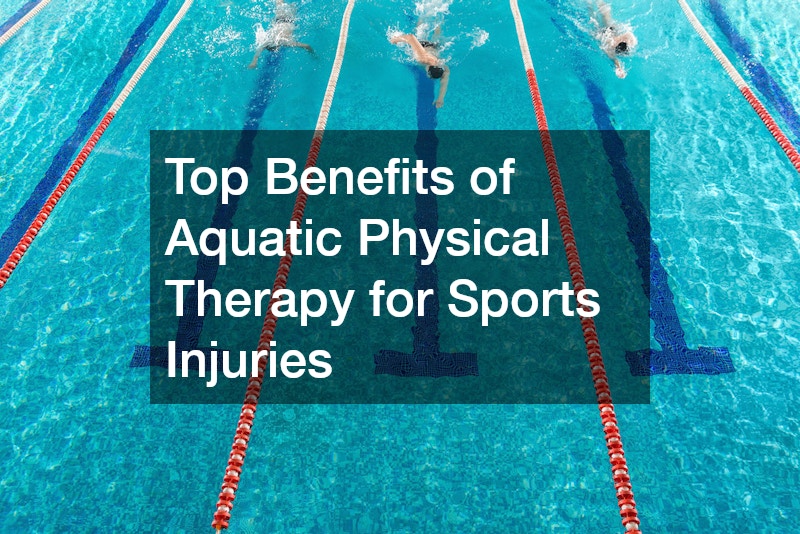Aquatic physical therapy has gained significant attention as a therapeutic option for athletes recovering from sports injuries. The unique properties of water provide a supportive environment that facilitates healing and rehabilitation. This article explores the top benefits of aquatic physical therapy for sports injuries and addresses common queries regarding its efficacy and application.
How does aquatic physical therapy aid in faster recovery from sports injuries?
Buoyancy and Reduced Gravity
The buoyancy of water reduces gravitational forces, allowing for gentle movement without stress on the joints and muscles. This is particularly beneficial for athletes who need to maintain activity while minimizing the risk of exacerbating their injuries. The supportive nature of water encourages early movement, essential for functional recovery.
Engaging in exercises within a water-based environment significantly eases the load on injured limbs. This reduction in stress facilitates healing by reducing strain and pressure on damaged tissues. Consequently, athletes can perform a wider range of motions that might be impossible or unsafe on land.
Furthermore, buoyancy aids in improving balance and coordination during the recovery process. The water’s resistance adds an extra layer of stability, helping athletes regain confidence as they heal. This aspect is crucial for sports-related rehabilitation, where coordination is just as important as strength.
Hydrodynamic Resistance
Water provides adjustable resistance, which helps in strengthening muscles while reducing the risk of further injury. Unlike static weights, the resistance offered by water can be varied by changing the speed or surface area of movements. This feature allows therapists to tailor rehabilitation exercises to fit athletes’ specific recovery needs.
The unique resistance of water facilitates muscle development without overloading the joints and tendons. Such exercise can lead to enhanced muscle endurance, critical for athletes aiming to return to their sports. Moreover, the constant resistance helps in building endurance and muscular strength progressively.
Pain Relief and Relaxation
The warm temperature and pressure of water can alleviate pain and promote relaxation, accelerating the healing process. The soothing properties of water acts as a natural analgesic, comforting sore muscles and enhancing circulation. This not only reduces pain perception but also promotes healing through increased blood flow.
Incorporating aquatic therapy into rehabilitation plans results in reduced muscle spasms and tightness. The hydrostatic pressure helps in reducing edema and swelling around injured areas, contributing to faster recovery. As excessively tight muscles relax, athletes find it easier to perform rehabilitation exercises.
What types of sports injuries benefit the most from aquatic physical therapy?
Joint Injuries
Injuries such as sprains or arthritis benefit from aquatic therapy thanks to the low-impact environment that supports joint recovery. The water’s buoyancy relieves pressure from joints, making it ideal for individuals with joint pain to perform exercises pain-free. This environment allows athletes to maintain mobility and prevent stiffness in injured joints.
For athletes dealing with arthritis, aquatic therapy provides an opportunity to continue the activity without aggravating their symptoms. The warm water helps decrease stiffness, improving the range of motion. Engaging in aquatic exercises can aid in the long-term management of joint health and pain mitigation.
Muscle Strains
The soothing water environment can aid in muscle healing and flexibility improvement without the strain of land-based exercises. Water’s natural buoyancy allows athletes to stretch and exercise their muscles with reduced risk of strain. This facilitates a safer recovery by promoting flexibility and reducing muscle tension.
Additionally, water therapy offers a range of therapeutic activities that help increase circulation and nutrient delivery to strained muscles. Improved circulation is essential for reducing inflammation and speeding up the healing process. As muscles become more supple in water, they can be more effectively strengthened.
Post-Surgical Rehabilitation
For those recovering from surgery for sports-related injuries, aquatic therapy offers a controlled setting to regain strength and mobility. The gentle support of water makes it a safer alternative for initiating movement following surgery. Early mobilization in water can also aid in reducing scar tissue formation and promoting faster recovery.
Engaging in water-based therapy post-surgery allows for progression at a customizable pace, reducing the risk of complications. The aquatic environment facilitates rehabilitation by supporting the injured area and allowing controlled movements without fear of re-injury. Moreover, the resistance aids in progressive strength building as athletes recover.
Aquatic physical therapy offers numerous benefits for athletes recovering from various sports injuries, leveraging unique water properties to promote healing and enhance rehabilitation outcomes. By understanding how this form of therapy accelerates recovery and the specific injuries it best serves, athletes and trainers can maximize its advantages for optimal results. Navigating the path to recovery from sports injuries can be challenging, but with tools like aquatic therapy, positive outcomes are well within reach.
.



